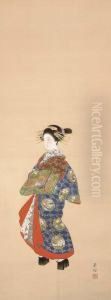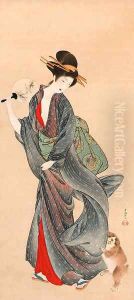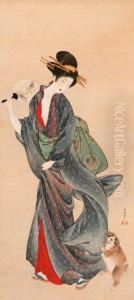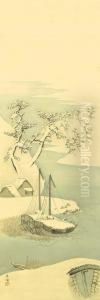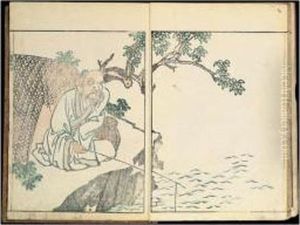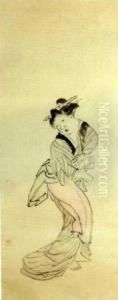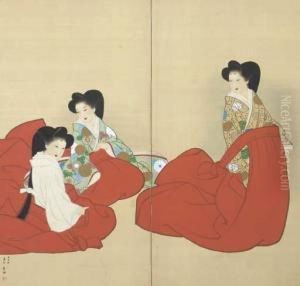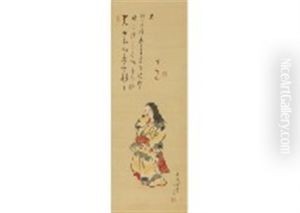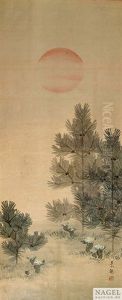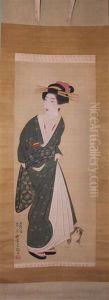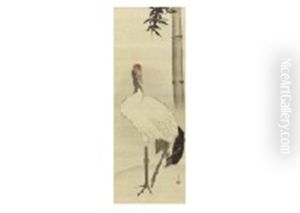Yamaguchi Soken Paintings
Yamaguchi Soken was a distinguished Japanese painter and poet born in 1759 in the city of Kyoto, during the Edo period, a time characterized by economic growth, strict social orders, isolationist foreign policies, popular enjoyment of arts and culture, and the unification under the Tokugawa shogunate. Hailing from a culturally rich period in Japanese history, Soken made significant contributions to the world of Japanese art, especially in the field of Nanga (Southern School) painting, a style that emphasized the importance of personal expression and the spiritual aspects of the natural world, drawing inspiration from Chinese literati painting traditions.
Soken was adept in both painting and the art of calligraphy, often incorporating poems into his artwork, which was a common practice among literati artists, who prized poetry, calligraphy, and painting as interconnected disciplines. His works often featured landscapes, flowers, and birds, executed with a delicate and refined touch. Soken's artistic style was characterized by its subtlety, elegance, and a profound sense of harmony with nature, reflecting the broader aesthetic preferences of the Edo period literati culture.
Despite being born in an era when Japan's policies of sakoku (closed country) limited foreign interactions, Soken, like many artists of the Nanga school, was deeply influenced by Chinese culture, philosophy, and art. He studied the works of Chinese painters and scholars, integrating their techniques and themes with his own unique perspective and Japanese sensibilities. This cross-cultural fusion within his art made him a pivotal figure in the development of Nanga painting in Japan, contributing to its evolution as a distinct genre that while rooted in Chinese traditions, was uniquely Japanese in its expression and context.
Throughout his lifetime, Yamaguchi Soken's contributions to the arts were not only limited to his paintings but also included his role as a teacher and mentor to younger artists, helping to perpetuate the Nanga tradition through successive generations. His legacy is evident in the continued appreciation and study of Nanga painting, marking him as an important figure in the history of Japanese art. Soken passed away in 1818, leaving behind a body of work that continues to be studied and admired for its beauty, depth, and historical significance.
